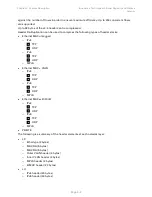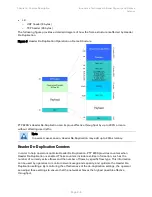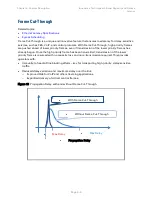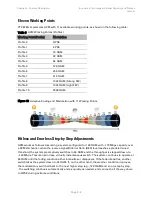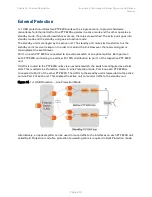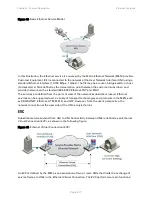
Chapter 4: Feature Description
Ethernet Features
•
Connects two or more customer sites (UNIs), enabling the transfer of Ethernet frames between
them.
•
Prevents data transfer involving customer sites that are not part of the same EVC. This feature
enables the EVC to maintain a secure and private data channel.
A single UNI can support multiple EVCs via the Service Multiplexing attribute. An ingress service
frame that is mapped to the EVC can be delivered to one or more of the UNIs in the EVC, other
than the ingress UNI. It is vital to avoid delivery back to the ingress UNI, and to avoid delivery to a
UNI that does not belong to the EVC. An EVC is always bi-directional in the sense that ingress
service frames can originate at any UNI in an EVC.
Service frames must be delivered with the same Ethernet MAC address and frame structure that
they had upon ingress to the service. In other words, the frame must be unchanged from source to
destination, in contrast to routing in which headers are discarded. Based on these characteristics,
an EVC can be used to form a Layer 2 private line or Virtual Private Network (VPN).
One or more VLANs can be mapped (bundled) to a single EVC.
The MEF has defined three types of EVCs:
1 Point to Point EVC – Each EVC contains exactly two UNIs. The following figure shows two point-
to-point EVCs connecting one site to two other sites.
Figure 20 Point to Point EVC
2 Multipoint (Multipoint-to-Multipoint) EVC – Each EVC contains two or more UNIs. In the figure
below, three sites belong to a single Multipoint EVC and can forward Ethernet frames to each
other.
Figure 21 Multipoint to Multipoint EVC
3 Rooted Multipoint EVC (Point-to-Multipoint) – Each EVC contains one or more UNIs, with one or
more UNIs defined as Roots, and the others defined as Leaves. The Roots can forward frames
to the Leaves. Leaves can only forward frames to the Roots, but not to other Leaves.
Page 4-18

